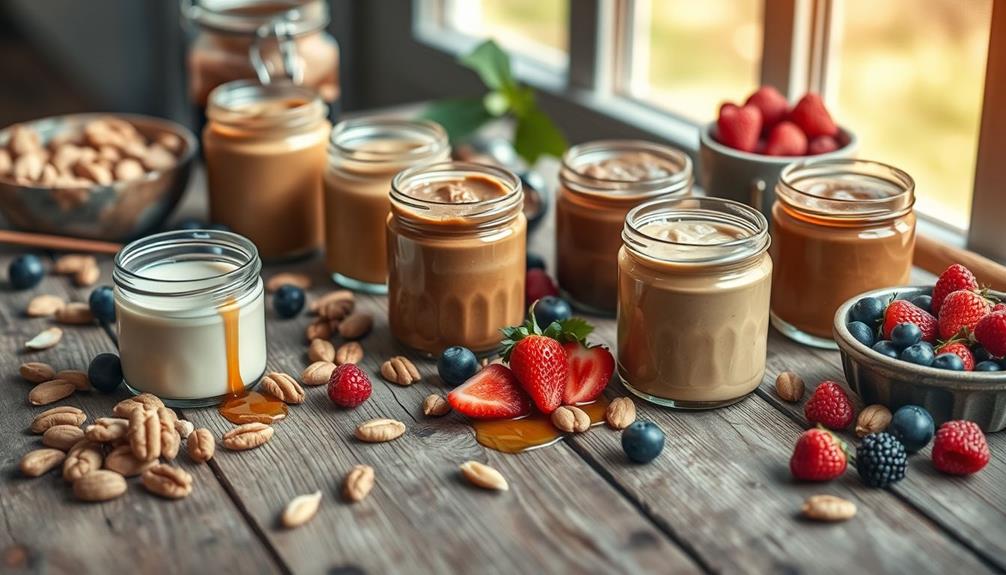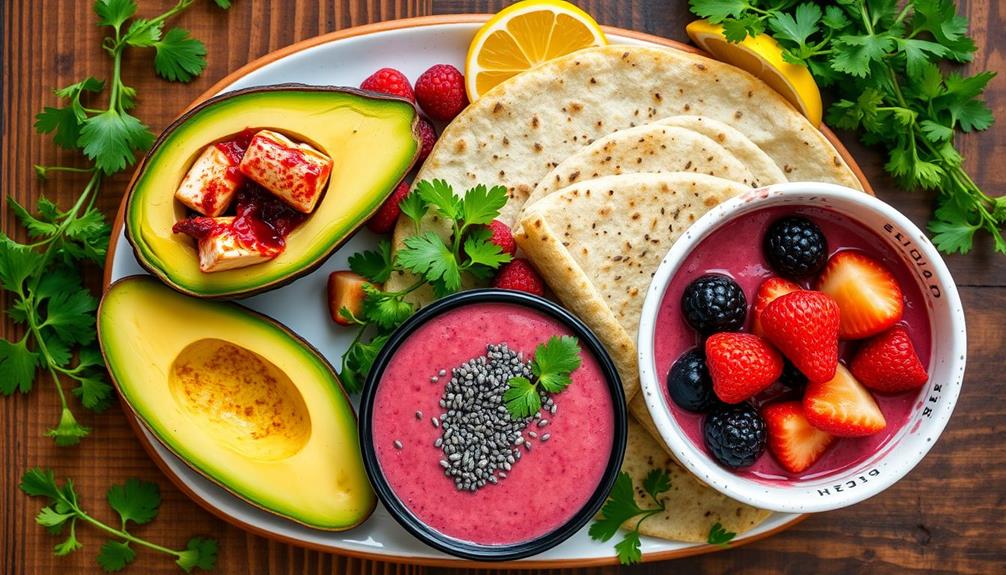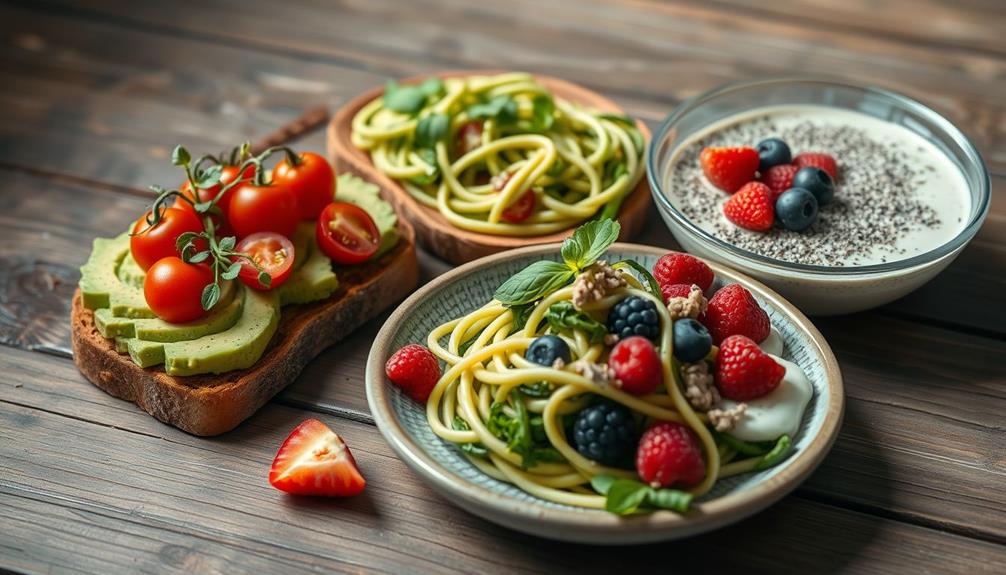Mastering the art of keto vegetable cooking lets you savor delicious, low-carb meals. Focus on nutrient-dense options like broccoli, zucchini, and spinach to keep your carb count low. Experiment with roasting, grilling, or sautéing to enhance flavors and textures. Don't forget to season with herbs and healthy fats like olive oil to boost nutrient absorption and taste. Create exciting dishes like cauliflower fried rice or sautéed Brussels sprouts with bacon for variety. With smart meal prep strategies, you can simplify your keto journey. Stick around to discover more tips and recipes that will elevate your keto vegetable cooking game! Consider exploring keto fat bomb recipes to add more healthy fats to your diet while keeping your carb intake in check. These can be a great addition to your keto vegetable cooking repertoire, providing both flavor and satiation. By incorporating these recipes into your meal prep routine, you can ensure that you have satisfying and nourishing options at your fingertips throughout the week.
Understanding Keto-Friendly Vegetables

When it comes to a ketogenic diet, understanding which vegetables are keto-friendly is crucial for maintaining low carb intake while maximizing nutrition.
You'll want to focus on low-carb, nutrient-dense options like broccoli, Brussels sprouts, zucchini, and cauliflower. These vegetables not only fit within your carb limits but also provide essential nutrients and fiber.
Leafy greens, such as spinach and kale, are excellent choices, too. Incorporating colorful vegetables into your meals can help satisfy cravings while keeping your carb count in check.
Cooking Methods for Vegetables
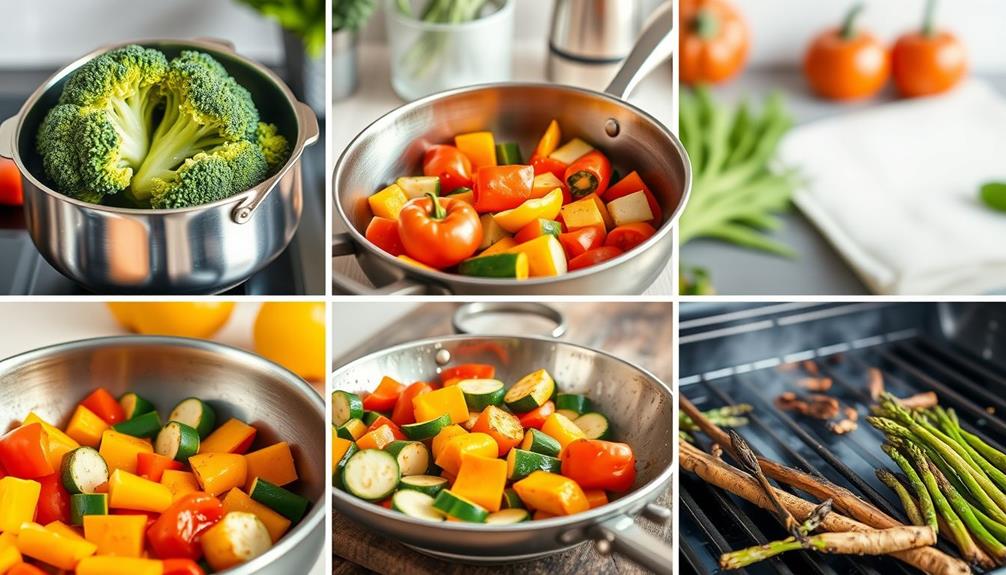
There are several effective cooking methods that can elevate the flavors and textures of keto-friendly vegetables, making them both delicious and satisfying. Here's a quick overview of some popular techniques:
| Cooking Method | Best For | Key Benefits |
|---|---|---|
| Roasting | Broccoli, Brussels sprouts | Brings out natural sweetness and promotes caramelization. |
| Grilling | Zucchini, eggplant | Adds smoky flavor while preserving crispness and nutrients. |
| Sautéing | Spinach, bell peppers | Quick and retains natural flavors with healthy fats. |
| Steaming | Asparagus, green beans | Preserves nutrients and enhances digestibility. |
Enhancing Flavor and Nutrition

Cooking methods can elevate the taste of keto-friendly vegetables, but enhancing their flavor and nutrition takes it a step further. Use herbs and spices like rosemary for roasted cauliflower or dill with sautéed zucchini to boost flavor without adding carbs.
Incorporate healthy fats, such as avocado oil or olive oil, to help your body absorb fat-soluble vitamins. Experimenting with various cooking techniques, like grilling or steaming, not only enhances taste but also keeps your meals exciting.
Remember to season generously with herbs like thyme or oregano to complement your dishes. Finally, focus on generous servings of these nutrient-dense vegetables to maximize their health benefits, making every bite both delicious and nutritious.
Delicious Keto Vegetable Recipes
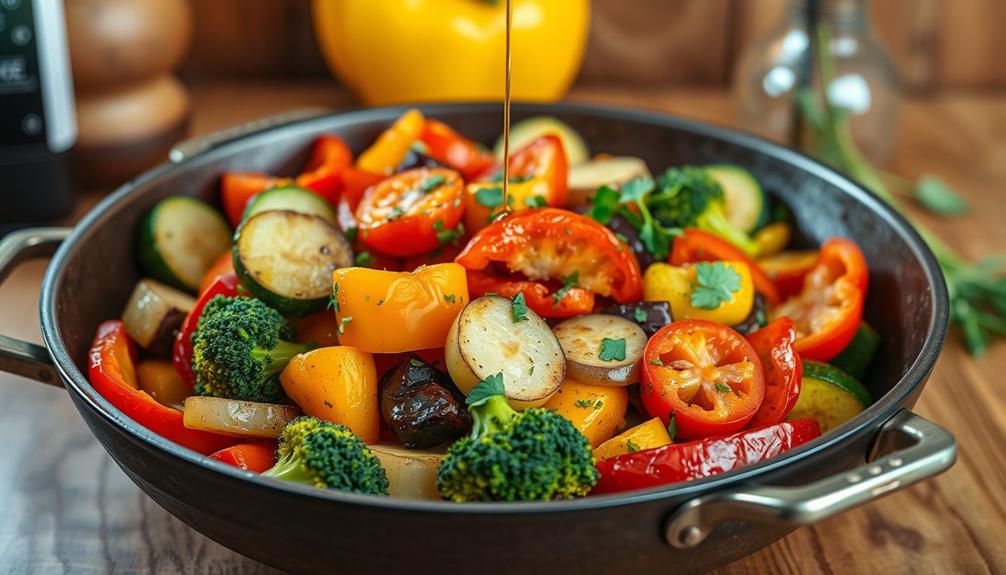
Keto-friendly vegetable recipes can transform your meals into delightful culinary experiences while keeping your carb intake low.
Try making zucchini noodles with homemade pesto for a fresh and flavorful dish. If you crave comfort food, whip up a broccoli and cheese casserole—it's creamy and satisfying.
For a unique twist, sauté Brussels sprouts with crispy bacon and a drizzle of balsamic glaze. Another great option is cauliflower fried rice, where grated cauliflower replaces traditional rice for a nutritious alternative.
Finally, layer roasted eggplant with marinara sauce and cheese for a delicious eggplant parmesan. Each recipe not only tantalizes your taste buds but also keeps you on track with your keto lifestyle.
Enjoy experimenting with these delicious dishes!
Meal Preparation Strategies

When planning your meals, effective preparation strategies can make all the difference in enjoying a keto lifestyle.
Efficient meal prep not only saves time but also guarantees you have delicious keto-friendly vegetables ready to go.
Here are three strategies to take into account:
- Batch Cooking: Prepare large quantities of your favorite veggies, like roasted broccoli or sautéed zucchini, to enjoy throughout the week.
- Pre-Cut Veggies: Wash and chop your vegetables in advance, storing them in airtight containers. This makes it easy to grab and cook when you're short on time.
- Mix and Match: Create versatile vegetable mixes that can be used in various recipes, allowing for quick meal assembly while keeping your meals exciting.
Implement these strategies to simplify your keto journey!
Avoiding High-Carb Vegetables
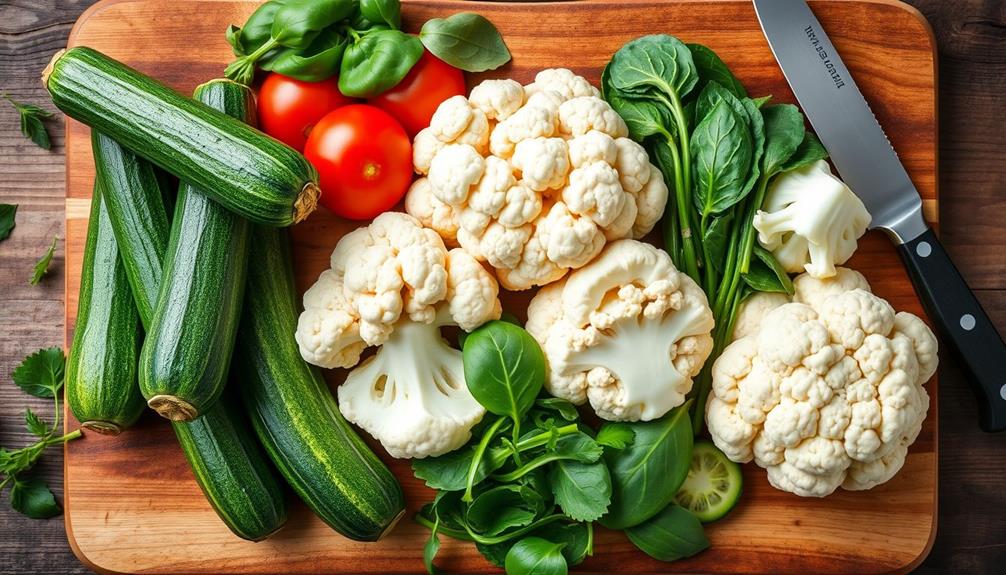
To maintain a successful keto diet, you'll want to steer clear of high-carb vegetables that can sabotage your efforts.
Vegetables like potatoes, corn, and peas are packed with starches, which can quickly elevate your carb intake and disrupt ketosis. Instead, focus on low-carb options like spinach, broccoli, and zucchini.
These choices not only keep your carb count low but also provide essential nutrients and fiber. When shopping, read labels and be mindful of hidden carbs in canned or processed vegetables.
Remember, even a small amount of high-carb vegetables can add up and hinder your goals. By sticking to keto-friendly veggies, you'll enjoy delicious meals without compromising your diet.
Stay informed and make conscious choices to support your keto journey.
Balancing Your Keto Diet

Balancing your keto diet often requires careful planning and awareness of your food choices.
It's crucial to verify you're getting the right nutrients while keeping your carb intake low. Here are three key strategies to help you maintain that balance:
- Focus on Low-Carb Vegetables: Include nutrient-dense options like spinach, kale, and zucchini to maximize vitamins and minerals without spiking your carb count.
- Incorporate Healthy Fats: Use olive oil, avocado, and nuts to enhance flavor and support nutrient absorption, making your dishes satisfying and delicious.
- Plan Your Meals: Preparing meals in advance can help you stick to your keto goals, guaranteeing that you have tasty, low-carb options ready to enjoy throughout the week.
Frequently Asked Questions
Can I Eat Root Vegetables on a Keto Diet?
You should limit root vegetables on a keto diet, as many are high in carbs. Instead, focus on low-carb options like leafy greens and cruciferous vegetables to maintain ketosis while enjoying nutrient-rich meals.
How Do I Store Leftover Cooked Vegetables?
To store leftover cooked vegetables, you'll want to cool them quickly, then place them in airtight containers. Refrigerate for up to three days, or freeze for longer-lasting freshness, ensuring you enjoy every bite!
Are Frozen Vegetables Keto-Friendly?
Yes, frozen vegetables are keto-friendly! They're often lower in carbs and packed with nutrients. Just check for any added sauces or sugars. You can easily incorporate them into your meals for convenience and flavor.
What Are the Benefits of Raw Versus Cooked Vegetables?
You might think raw veggies are always healthier, but cooked ones often enhance nutrient absorption. Cooking can make certain vitamins more accessible, while raw options provide fiber and enzymes. Balance both for ideal health benefits.
How Can I Incorporate More Vegetables Into My Meals?
You can incorporate more vegetables into your meals by adding them to soups, salads, and stir-fries. Try roasting or grilling for enhanced flavor, and experiment with different herbs and spices to elevate your dishes.
Conclusion
Mastering keto vegetable cooking is easier than you think! You might worry that low-carb meals lack flavor, but with the right cooking methods and seasoning, your dishes will burst with deliciousness. Picture a vibrant plate filled with roasted Brussels sprouts, sautéed spinach, and zesty cauliflower, all drizzled with olive oil and sprinkled with garlic. By embracing these vibrant veggies, you're not just eating right; you're creating meals that excite your palate while keeping you on track with your keto lifestyle.

